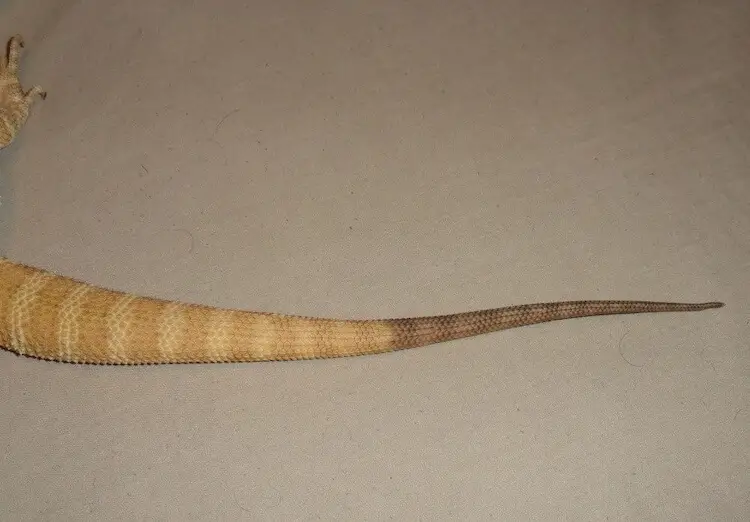Bearded dragon tail rot is an infection caused by bacteria that usually affects the tail, leading to discoloration, swelling, and an unpleasant smell.
If left untreated, tail rot can spread to the rest of the body and harm the internal organs, potentially becoming fatal. (According to a reptile vet)
Here are some signs to look out for to identify tail rot in bearded dragons:
- Due to an insufficient supply of healthy blood, the tail’s tip, beset by necrotic tissue, may adopt hues of blue, purple, or black.
- The tail may also lose all sensation.
- Indications of tail rot advancement also include lethargy, diminished appetite, and discomfort.
Causes of Bearded Dragon Tail Rot
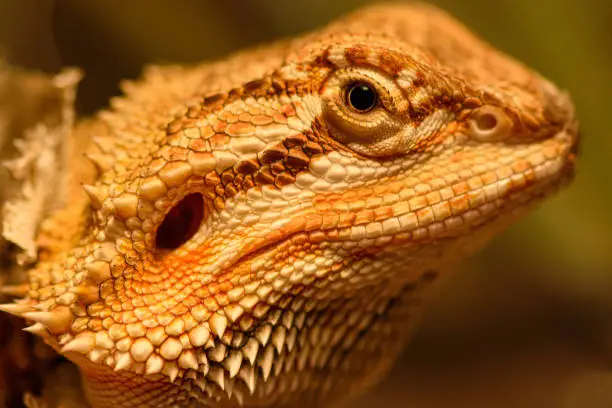
Poor hygiene and sanitation
A lack of proper hygiene and sanitation can be a significant cause of tail rot in bearded dragons. Bearded dragons require a clean and hygienic environment to thrive.
When their enclosure is not cleaned regularly, it can lead to the growth of harmful bacteria, fungi, or parasites that can infect the bearded dragon’s tail.
Poor hygiene practices such as failing to wash hands before handling the pet or using dirty tools during cleaning can introduce harmful pathogens that cause infections.
To prevent this cause of tail rot in bearded dragons, keep their enclosure clean by removing feces and uneaten food daily. Wipe down surfaces with a reptile-safe disinfectant regularly.
Ensure that their water dish is clean and full of fresh water at all times. When handling your pet or cleaning its enclosure, always wash your hands thoroughly beforehand to avoid introducing any harmful bacteria or fungi.
Trauma or injury to the tail
Bearded dragons are active animals that love to explore their surroundings. Sometimes they can accidentally injure themselves while doing so.
Tail rot due to trauma or injury often happens when their tails get caught in something while exploring or when other pets attack them.
When an injury occurs, it is essential to address it immediately by cleaning the wound with an antiseptic solution and applying an antibiotic cream if necessary.
If there is an open wound, ensure that it stays dry and does not come into contact with any dirty surfaces within the enclosure.
Prevention measures for tail rot caused by trauma include ensuring that there are no sharp edges in the enclosure where they could get injured, supervising playtimes closely if playing outside their cage, and separating aggressive pets from one another.
Fungal or bacterial infections
Fungal or bacterial infections are common causes of tail rot in bearded dragons. These infections can enter the body through open wounds or cuts, leading to the development of tail rot.
Bacteria and fungi thrive in warm, damp environments, so it’s essential to keep their enclosure clean and dry as much as possible.
Symptoms of bacterial or fungal infections include swelling around the affected area, bumps on the skin, darkening or blackening of the tail tip, and a foul odor.
To prevent this type of tail rot from developing in your bearded dragon, ensure that its enclosure is clean and hygienic at all times.
Also, use a disinfectant regularly when cleaning their environment to kill any potential bacteria or fungi.
If you notice any signs of infection, take your pet to a veterinarian immediately for treatment.
Home remedies for treating bearded dragon tail rot
Here’s how to treat bearded dragon tail rot at home:
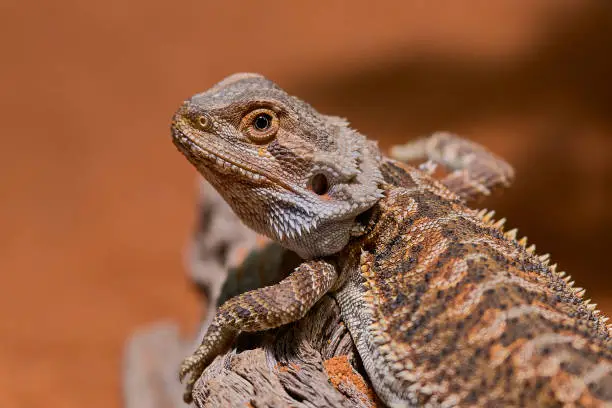
Soaking in warm water with betadine solution
One of the most effective ways to treat bearded dragon tail rot at home is by soaking the affected area in warm water with a betadine solution.
To prepare the solution, add one teaspoon of betadine (povidone-iodine) to a quart of lukewarm water. Mix well until the solution turns amber-colored.
Next, it’s important to gently place your bearded dragon’s tail into the solution and allow it to soak for 20-30 minutes.
This should be done twice a day until improvement is seen, but never more than that as over-soaking can dry out and damage healthy tissue.
Betadine has antiseptic properties and is effective in killing fungi and bacteria that cause infection on your pet’s skin. It also helps reduce inflammation and swelling in the affected area.
Application of topical antibiotics or antifungal creams
For severe cases, the veterinarian may recommend applying an antibiotic ointment or antifungal cream directly onto the affected area after cleaning it properly.
Two common topical options used for treating tail rot are triple antibiotic ointment and Lotrimin AF cream.
When applying these creams, it’s essential to use a cotton swab or gauze pad gently as rubbing can worsen pain for your pet if there are open wounds from their tail rot condition.
Always read product instructions before administering anything topically on your pet’s skin.
It’s also important not to apply too much pressure while administering any medication as this could easily injure healthy surrounding tissue around your pet’s infected area.
Improving hygiene and sanitation in the enclosure
Your bearded dragon’s living environment can significantly affect whether they develop tail rot or not.
Therefore, it’s essential to keep their enclosure clean and hygienic. Ensure that you remove any feces or uneaten food from their enclosure daily and replace their bedding with fresh ones regularly.
You should also wash their food bowls, water dish, and any other items in the enclosure frequently with soap and hot water.
By keeping their enclosure clean, you can prevent the growth of harmful microorganisms that could cause tail rot.
Symptoms of Bearded Dragon Tail Rot
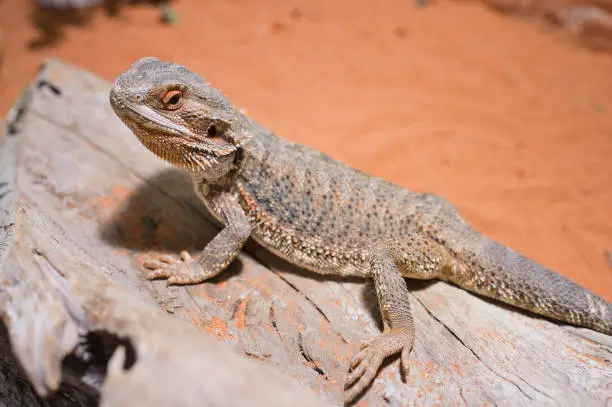
Bearded dragon tail rot is a serious condition that can cause the loss of the affected tail and even death if left untreated.
It’s important to recognize the symptoms of this condition so you can take prompt action to treat it.
The most common symptom of bearded dragon tail rot is blackened, necrotic tissue on the tail. This occurs when the tissue dies due to a lack of blood flow caused by an infection or injury.
It often starts at the tip of the tail and spreads towards the base. If you notice any discoloration on your bearded dragon’s tail, it’s important to examine it closely and look for other symptoms.
Another symptom of bearded dragon tail rot is swelling and inflammation around the affected area.
You may notice that your pet’s skin appears red and irritated, or that there is a lump or bump on their tail where the infection has spread.
This can cause discomfort and pain for your bearded dragon, especially if they are unable to move their tail without causing further injury.
In addition to physical symptoms, you may also notice changes in your bearded dragon’s behavior or demeanor if they are suffering from tail rot.
They may become lethargic or lose their appetite due to pain or discomfort. If you suspect that your pet has tail rot, it’s important to seek veterinary attention immediately for diagnosis and treatment options.
Blackened Necrotic Tissue on The Tail
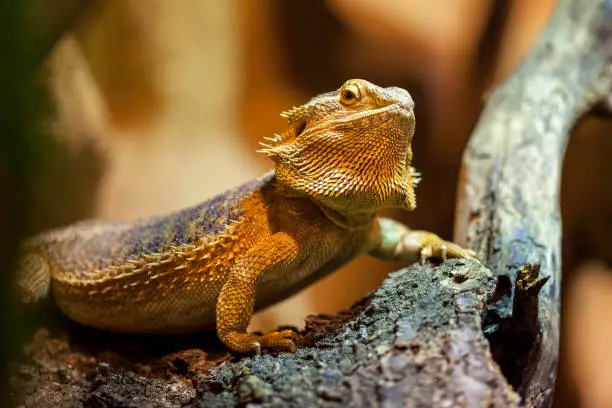
One of the most visible symptoms of bearded dragon tail rot is blackened, necrotic tissue on their tails.
This happens when bacteria or fungus infects an open wound in your pet’s skin causing tissue death due to lack of blood flow around the wound area.
Necrosis causes blackening as tissues break down leading ultimately leading to slow deterioration until treated.
If left untreated, this necrosis will continue to spread up the tail, leading to further tissue damage and, in severe cases, the full loss of the tail.
That’s why it’s important to monitor your bearded dragon’s tail carefully for any signs of discoloration or damage.
If you do notice any blackened tissue on their tail, it is crucial that you take immediate action by initiating home treatments or bringing your pet to a veterinarian.
It’s important to note that while blackened tissue is a common symptom of tail rot, it can also be indicative of other conditions such as injury or trauma.
That’s why as soon as you notice this symptom on your bearded dragon’s tail, you should seek veterinary attention immediately for proper diagnosis and treatment options.
How To Prevent Bearded Dragon Tail Rot
To prevent bearded dragon tail rot, you should follow these guidelines:
Maintain proper hygiene: Keep your bearded dragon’s enclosure clean and free from bacteria. Regularly clean the tank and remove any waste or uneaten food.
Provide a clean and spacious habitat: Ensure that your bearded dragon has enough space to move around and that its enclosure is well-ventilated. A clean and stress-free environment promotes overall health and helps prevent tail rot.
Optimal temperature and humidity: Maintain the appropriate temperature and humidity levels in the habitat. Bearded dragons require a basking spot with a temperature between 95-105°F (35-40°C) and a cooler side around 75-85°F (24-29°C). The humidity level should be around 30-40%.
Provide a balanced diet: Offer a varied diet consisting of appropriately-sized insects, leafy greens, and vegetables. Bearded dragons need a proper balance of calcium and phosphorus in their diet, so dust their food with a reptile-specific calcium supplement. Avoid feeding them high-fat or low-quality foods that can lead to health issues.
Offer clean water: Ensure that your bearded dragon has access to clean and fresh water at all times. Change the water daily and clean the water dish regularly to prevent bacteria buildup.
Avoid rough handling: Be gentle when handling your bearded dragon to prevent any injuries to the tail. Rough handling can lead to stress and may increase the risk of tail rot.
Regular health check-ups: Schedule regular visits to an experienced reptile veterinarian for routine check-ups. They can identify early signs of tail rot or any other health issues and provide appropriate treatment.
Observe and monitor: Regularly examine your bearded dragon’s tail for any signs of discoloration, swelling, or wounds. If you notice any abnormalities, consult a veterinarian promptly for proper diagnosis and treatment.
Conclusion
Bearded dragons are susceptible to tail rot infections, which can be life-threatening if not addressed promptly.
Home remedies such as soaking in warm water with betadine solution, application of topical antibiotics or antifungal creams, along with improving hygiene and sanitation in the enclosure can help treat this condition effectively.
If your pet’s condition does not improve after administering these remedies for a week or so, it’s best to seek medical attention from a vet immediately.
Remember always to consult with a veterinarian before trying any home remedy on your bearded dragon.
